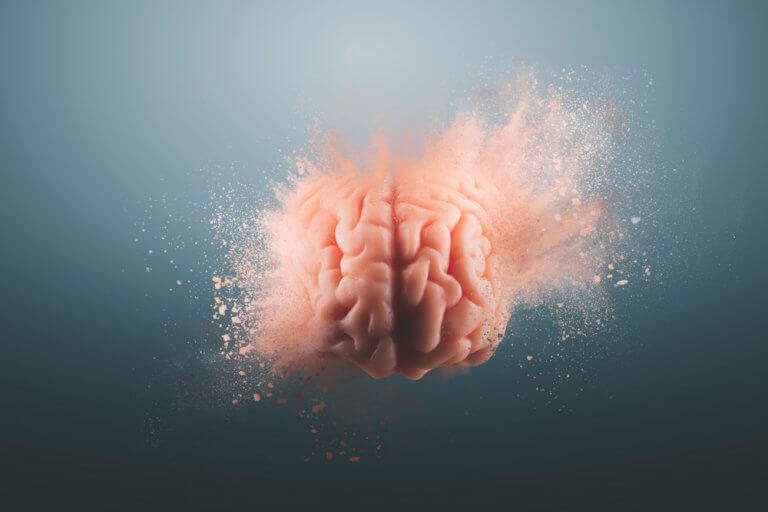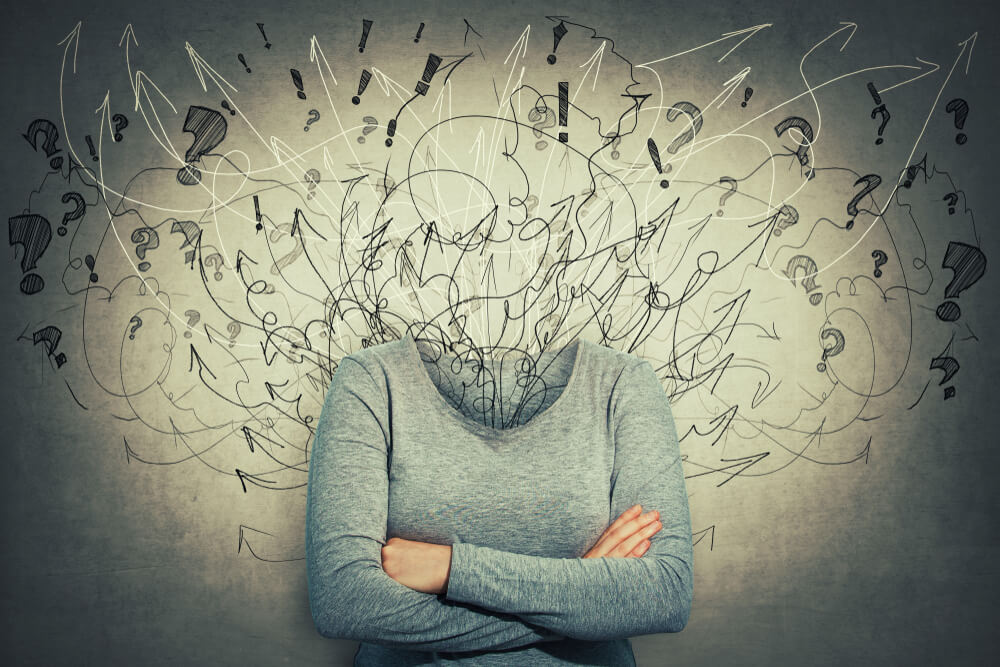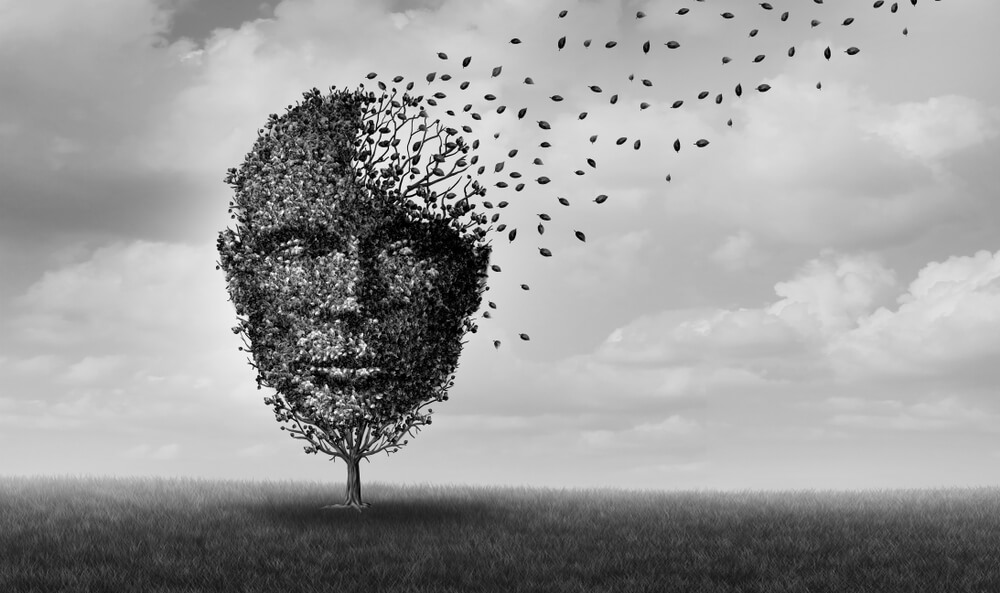Memory Disorders: Main Features


Escrito y verificado por el psicólogo Bernardo Peña
Memory disorders cover all the alterations and pathologies that result in problems when encoding, storing, and retrieving information.
Memory is a fundamental cognitive process for the human being, and memory disorders can be devastating.
Introduction to memory

Memory is a cognitive process that allows information to be encoded, stored, and retrieved. If it weren’t for memory, we wouldn’t be able to learn, think, or know who we are.
We could say that memory provides human beings with the necessary knowledge to understand the world around us, by preserving and reworking memories and constantly updating data and parameters of our ever-changing environment.
There’s an implicit memory, which includes our habits, associations of stimuli, events or ideas, and perceptual-motor skills (such as driving or dancing). There’s also an explicit memory that encompasses all those conscious memories.
Human beings build their reality through basic cognitive processes such as attention, perception, and memory. It’s through the latter that I can save and select the relevant information that has been previously processed.
Memory processes

As previously stated, memory works through three fundamental processes:
- Coding: This elaborates and transforms stimuli to give them meaning. To carry it out, a certain level of attention is needed, and the stimulus needs to be relatively salient.
- Storage: As its name indicates, it stores or archives the previously encoded information in memory. This information is archived schematically and based on categories.
- Recovery: Its function is to bring stored information to consciousness, either voluntarily or incidentally. It’s noteworthy that the emotional state can influence the memories that can be retrieved; anxiety can partially block this process. For example, when we’re in the middle of an exam and can’t remember the answer, and when we finish it we can.
Memory structure
Some scientists, such as Atkinson and Shiffrin, try to study the structure and function of memory, concluding that it’s made up of three interactive systems:
- Sensory memory. Registers external stimuli, such as images, sounds, smells, tastes, sensations, etc. for a short period of time. If this information isn’t processed it will quickly decline.
- Short-term memory. Its function is to organize and analyze the information recorded through the senses. It allows us to integrate our present experience in our autobiographical memory and organize plans for the future. Its duration is only about 20 seconds and it’s quite limited.
- Long-term memory. Theoretically, it’s unlimited and allows us to archive all our knowledge and memories in a solid and stable way. Following reports by authors such as Squire and Tulving, the existence of several types of MLP is proposed:
- Declarative: This saves all kinds of information about facts and events, as well as the knowledge acquired by the individual. For example, it would save the knowledge studied in the career of medicine or psychology.
- Procedural: This has more to do with memory skills. Often, a subject learns a complex skill, such as boxing. If asked, it will be difficult for them to explain the details of their movements. This would be of the more unconscious type.
- Episodic: Autobiographical memory, the individual timeline that gives meaning to the person’s life.
- Semantics: This is the storage of technical knowledge, such as language or mathematics. If you ask someone when they learned a certain word, or to construct sentences, they may not remember, but they won’t forget that knowledge. It’s almost immune to being lost.
There’s an intrinsic function of memory – forgetting. You have to forget in order to live. If we remembered absolutely everything we would saturate the cognitive system and it would be extremely difficult to obtain the stored information.
Memory disorders

The main memory disorders are related to amnesia. There are several types – those that prevent storing new memories and those that prevent access to memories.
Amnesia
This means memory deficit, and it’s the total or partial loss of memory. It can be reversible or irreversible, and can affect the phase of fixation, storage and/or retrieval of the information.
Fixation amnesia
This is the inability to consolidate new memories. When a person suffers from this type of amnesia, it’s said that they “live in the present”, and that they won’t remember anything about their past. Within this type are the “anterograde amnesias”. Anterograde amnesias are always organic in origin and occur as a result of a neurological event.
Conservation amnesia

This is the inability to remember something. A loss of memories, of those already stored. However, not all memories are as easily forgotten.
Ribot’s law says that more recent memories, less organized and less automated, are more vulnerable to loss. There are different types of conservation amnesia.
- Global. A person can lose all the memories of their past.
- Lacunar. The memories that are lost are delimited in time.
- Selective. These are divided into two types:
- Episodic: a specific life event is forgotten.
- Semantics: what is lost is knowledge, or certain types of knowledge.
Evocation amnesia

This is when the memory isn’t lost but it’s very difficult to bring it to the forefront of your memory. It’s when the person doesn’t remember something, but has the feeling that they know it.
Perhaps this could be due to an altered emotional state (a lot of anxiety), asthenia, inattention, exposure to content that interferes with the ability to retrieve information, etc.
Pseudoamnesia
People with this memory disorder have the feeling that they have lost their memory, but objectively there’s no such loss. Agnosias, for example, are sensory amnesias. In fact, something you see, touch, smell, etc., isn’t recognized. This type of amnesia is organic in origin.
Amnesic syndrome

This is a memory disorder but without behavioral or cognitive impairment.
Korsakoff-Wernicke syndrome
- Anterograde (fixation) and partial retrograde (conservation) amnesia.
- Spatial and temporal disorientation.
- Collusion (mixture of true and false memories).
- False recognition.
This syndrome appears to be due to prolonged alcohol consumption and a diet deficient in thiamine or vitamin B1. In this memory disorder, only memory is affected. This is in contrast to the other syndrome produced by alcohol – alcoholic dementia – where cognitive parts are also affected.
You may be interested in: Serotonin and Depression: How Are They Related?
Hypermnesia
This is a memory disorder in which the person is able to evoke or retain an extraordinarily high amount of information.
For example, an oversized episodic memory with an inability to forget memories of one’s own life, which interferes with the clarity of the individual’s thought. Some examples would be:
- Phenomenon of the wise idiot: Usually, these are people with autism or mental retardation who are characterized by learning data without apparent sense that they repeat over and over again
- Ecmenesia: The person takes memories of their past as if they were occurring in the present moment. For example, a mother whose child has died and gets up in the morning and prepares breakfast for her deceased child.
- Autobiographical panoramic vision: The people who have experienced this describe it as if their whole life had passed in front of their eyes.
Paramnesias

They are memory disorders that are characterized by the distortion of memories.
Memory disorders
- Confabulations: A mix of true and false memories. The person recounts things that haven’t happened, trying to compensate for the loss of memory regarding what they want to remember. Main features:
- Inventions are going to be short-lived.
- The patient expresses the supposed event without thinking about it, a process of preparation is lacking.
- This anomaly can be easily provoked given its propensity to manifest itself.
- The person, once confronted with the non-existence of such events, doesn’t continue to claim their false descriptions are true.
- The content of the conspiracy is usually related to the patient’s usual occupation.
- The conspiracy is due to organic processes in the brain.
- Retrospective forgeries: A disproportionate exaggeration of memories that the person has.
- False delusional memories: The person recalls a delusional idea prior to its appearance.
- Fantastic pseudology (mythomania): People who make up stories that often live on. They’re told for a purpose, usually to attract attention to yourself, stand out, gain personal prestige, etc. The person tells a story of things that have happened to them. The things that are invented are usually plausible, but when the subject is confronted with the reality of the facts, they end up admitting the fabrication.
- Having it on the tip of your tongue: Having the subjective certainty that what you want to remember is in your memory, but you don’t remember it. It may be due to interference with recovery.
- Checkup: When the person checks if they have done a routine task because they’re not totally sure if they’ve done it.
Disorders produced in recognition
- Déjá vu: This is where you have the feeling that what you’re experiencing has actually happened to you before. It’s actually an error in recognition.
- Jamais vu: In this case, the subject is in a familiar situation, but they mistakenly believe that the situation is totally new.
- Capgras syndrome: The person sees a relative or an acquaintance and believes that it’s a “double” who is posing as the person they know.
- Cryptoamnesia: When a memory is partially lost and appears in consciousness as if it were new content. The person may think they have an original idea, but they don’t. Could this phenomenon be behind many cases of plagiarism?
Dissociative disorders

These are memory disorders in which dissociation occurs (structured separation of mental processes that normally appear integrated). They never have an organic cause, they are all psychogenic.
Dissociative amnesia
This is caused by a traumatic or extraordinarily stressful event that prevents the subject from remembering vital information. Thus, a memory gap is created. In fact, it can span from hours to decades of a person’s life.
Dissociative fugue
There’s a loss of memory and a fleeing from the situation that creates discomfort. There are times when the person doesn’t remember how they got to a place or who they are. The person has no interest in finding out how or why they got there because they were trying to flee.
It usually appears in adulthood, but it is rare for it to appear after 50 years. If it has been suffered at 20 years it may appear at 50, but if it happens at this age it does not appear except in very rare exceptions. When it returns to its original state, before the memory disorder, the person remembers the experience after the escape, not the previous thing.
Discover more about: Tramadol: History and Overview
Dissociative identity disorder
This is a very rare memory disorder that can begin in childhood, but isn’t noticeable until later. It’s diagnosed more in women who have suffered abuse since childhood over the years. Once established, the disorder lasts for life if there’s no treatment.

Two or more personalities can be adopted. There are cases where identities are complete (gait, dress, tastes, etc.). Personalities can appear simultaneously (at some point they coexist, they can interact, and fight each other…) or they can appear successively (first one, then another).
These personalities sometimes know each other and sometimes they don’t. If none of them are known, it’s called symmetric amnesia. Another case would be asymmetric amnesia, where personality A knows B, but B doesn’t know A. If all personalities know each other then there’s no amnesia.
One problem with this disorder is figuring out what the primary (true) self is. Some say that the primary self is the personality with the most socially acceptable characteristics.
There’s also another group that thinks that this should be the personality that appears the most times. Finally, other researchers believe that the primary self should be the one that lasts the longest. When we determine the primary self, we separate it from the other personalities, and we call the other personalities guests.

The passage from one personality to another is called a transition. It’s difficult to know which are the true memories and which aren’t. It’s a very complicated disorder, and it usually arises from very serious traumas. It can appear in other disorders too.
Depersonalization disorders
The person has a feeling of unreality, as if they were living a dream or as if time stopped. This disorder usually occurs when someone is subjected to very intense pressure, whether in the work, academic or social environment. Two types are mainly distinguished:
- Depersonalization: When this feeling of strangeness occurs about oneself – our bodies or mental processes. The person who suffers it feels like an automaton.
- Derealization: When it refers to our external environment. In this case, the patient may report that they see everything as if it were a movie.
Memory disorders: conclusions
Memory disorders range from simple benign alterations to totally disabling conditions. Memory is a fundamental cognitive process to shape each person’s identity, learning, and experience.
If this fails, the relationship with the environment and with one’s own identity may be compromised. Therefore, in case of memory problems, we recommend consulting with your psychologist or doctor immediately.
Memory disorders cover all the alterations and pathologies that result in problems when encoding, storing, and retrieving information.
Memory is a fundamental cognitive process for the human being, and memory disorders can be devastating.
Introduction to memory

Memory is a cognitive process that allows information to be encoded, stored, and retrieved. If it weren’t for memory, we wouldn’t be able to learn, think, or know who we are.
We could say that memory provides human beings with the necessary knowledge to understand the world around us, by preserving and reworking memories and constantly updating data and parameters of our ever-changing environment.
There’s an implicit memory, which includes our habits, associations of stimuli, events or ideas, and perceptual-motor skills (such as driving or dancing). There’s also an explicit memory that encompasses all those conscious memories.
Human beings build their reality through basic cognitive processes such as attention, perception, and memory. It’s through the latter that I can save and select the relevant information that has been previously processed.
Memory processes

As previously stated, memory works through three fundamental processes:
- Coding: This elaborates and transforms stimuli to give them meaning. To carry it out, a certain level of attention is needed, and the stimulus needs to be relatively salient.
- Storage: As its name indicates, it stores or archives the previously encoded information in memory. This information is archived schematically and based on categories.
- Recovery: Its function is to bring stored information to consciousness, either voluntarily or incidentally. It’s noteworthy that the emotional state can influence the memories that can be retrieved; anxiety can partially block this process. For example, when we’re in the middle of an exam and can’t remember the answer, and when we finish it we can.
Memory structure
Some scientists, such as Atkinson and Shiffrin, try to study the structure and function of memory, concluding that it’s made up of three interactive systems:
- Sensory memory. Registers external stimuli, such as images, sounds, smells, tastes, sensations, etc. for a short period of time. If this information isn’t processed it will quickly decline.
- Short-term memory. Its function is to organize and analyze the information recorded through the senses. It allows us to integrate our present experience in our autobiographical memory and organize plans for the future. Its duration is only about 20 seconds and it’s quite limited.
- Long-term memory. Theoretically, it’s unlimited and allows us to archive all our knowledge and memories in a solid and stable way. Following reports by authors such as Squire and Tulving, the existence of several types of MLP is proposed:
- Declarative: This saves all kinds of information about facts and events, as well as the knowledge acquired by the individual. For example, it would save the knowledge studied in the career of medicine or psychology.
- Procedural: This has more to do with memory skills. Often, a subject learns a complex skill, such as boxing. If asked, it will be difficult for them to explain the details of their movements. This would be of the more unconscious type.
- Episodic: Autobiographical memory, the individual timeline that gives meaning to the person’s life.
- Semantics: This is the storage of technical knowledge, such as language or mathematics. If you ask someone when they learned a certain word, or to construct sentences, they may not remember, but they won’t forget that knowledge. It’s almost immune to being lost.
There’s an intrinsic function of memory – forgetting. You have to forget in order to live. If we remembered absolutely everything we would saturate the cognitive system and it would be extremely difficult to obtain the stored information.
Memory disorders

The main memory disorders are related to amnesia. There are several types – those that prevent storing new memories and those that prevent access to memories.
Amnesia
This means memory deficit, and it’s the total or partial loss of memory. It can be reversible or irreversible, and can affect the phase of fixation, storage and/or retrieval of the information.
Fixation amnesia
This is the inability to consolidate new memories. When a person suffers from this type of amnesia, it’s said that they “live in the present”, and that they won’t remember anything about their past. Within this type are the “anterograde amnesias”. Anterograde amnesias are always organic in origin and occur as a result of a neurological event.
Conservation amnesia

This is the inability to remember something. A loss of memories, of those already stored. However, not all memories are as easily forgotten.
Ribot’s law says that more recent memories, less organized and less automated, are more vulnerable to loss. There are different types of conservation amnesia.
- Global. A person can lose all the memories of their past.
- Lacunar. The memories that are lost are delimited in time.
- Selective. These are divided into two types:
- Episodic: a specific life event is forgotten.
- Semantics: what is lost is knowledge, or certain types of knowledge.
Evocation amnesia

This is when the memory isn’t lost but it’s very difficult to bring it to the forefront of your memory. It’s when the person doesn’t remember something, but has the feeling that they know it.
Perhaps this could be due to an altered emotional state (a lot of anxiety), asthenia, inattention, exposure to content that interferes with the ability to retrieve information, etc.
Pseudoamnesia
People with this memory disorder have the feeling that they have lost their memory, but objectively there’s no such loss. Agnosias, for example, are sensory amnesias. In fact, something you see, touch, smell, etc., isn’t recognized. This type of amnesia is organic in origin.
Amnesic syndrome

This is a memory disorder but without behavioral or cognitive impairment.
Korsakoff-Wernicke syndrome
- Anterograde (fixation) and partial retrograde (conservation) amnesia.
- Spatial and temporal disorientation.
- Collusion (mixture of true and false memories).
- False recognition.
This syndrome appears to be due to prolonged alcohol consumption and a diet deficient in thiamine or vitamin B1. In this memory disorder, only memory is affected. This is in contrast to the other syndrome produced by alcohol – alcoholic dementia – where cognitive parts are also affected.
You may be interested in: Serotonin and Depression: How Are They Related?
Hypermnesia
This is a memory disorder in which the person is able to evoke or retain an extraordinarily high amount of information.
For example, an oversized episodic memory with an inability to forget memories of one’s own life, which interferes with the clarity of the individual’s thought. Some examples would be:
- Phenomenon of the wise idiot: Usually, these are people with autism or mental retardation who are characterized by learning data without apparent sense that they repeat over and over again
- Ecmenesia: The person takes memories of their past as if they were occurring in the present moment. For example, a mother whose child has died and gets up in the morning and prepares breakfast for her deceased child.
- Autobiographical panoramic vision: The people who have experienced this describe it as if their whole life had passed in front of their eyes.
Paramnesias

They are memory disorders that are characterized by the distortion of memories.
Memory disorders
- Confabulations: A mix of true and false memories. The person recounts things that haven’t happened, trying to compensate for the loss of memory regarding what they want to remember. Main features:
- Inventions are going to be short-lived.
- The patient expresses the supposed event without thinking about it, a process of preparation is lacking.
- This anomaly can be easily provoked given its propensity to manifest itself.
- The person, once confronted with the non-existence of such events, doesn’t continue to claim their false descriptions are true.
- The content of the conspiracy is usually related to the patient’s usual occupation.
- The conspiracy is due to organic processes in the brain.
- Retrospective forgeries: A disproportionate exaggeration of memories that the person has.
- False delusional memories: The person recalls a delusional idea prior to its appearance.
- Fantastic pseudology (mythomania): People who make up stories that often live on. They’re told for a purpose, usually to attract attention to yourself, stand out, gain personal prestige, etc. The person tells a story of things that have happened to them. The things that are invented are usually plausible, but when the subject is confronted with the reality of the facts, they end up admitting the fabrication.
- Having it on the tip of your tongue: Having the subjective certainty that what you want to remember is in your memory, but you don’t remember it. It may be due to interference with recovery.
- Checkup: When the person checks if they have done a routine task because they’re not totally sure if they’ve done it.
Disorders produced in recognition
- Déjá vu: This is where you have the feeling that what you’re experiencing has actually happened to you before. It’s actually an error in recognition.
- Jamais vu: In this case, the subject is in a familiar situation, but they mistakenly believe that the situation is totally new.
- Capgras syndrome: The person sees a relative or an acquaintance and believes that it’s a “double” who is posing as the person they know.
- Cryptoamnesia: When a memory is partially lost and appears in consciousness as if it were new content. The person may think they have an original idea, but they don’t. Could this phenomenon be behind many cases of plagiarism?
Dissociative disorders

These are memory disorders in which dissociation occurs (structured separation of mental processes that normally appear integrated). They never have an organic cause, they are all psychogenic.
Dissociative amnesia
This is caused by a traumatic or extraordinarily stressful event that prevents the subject from remembering vital information. Thus, a memory gap is created. In fact, it can span from hours to decades of a person’s life.
Dissociative fugue
There’s a loss of memory and a fleeing from the situation that creates discomfort. There are times when the person doesn’t remember how they got to a place or who they are. The person has no interest in finding out how or why they got there because they were trying to flee.
It usually appears in adulthood, but it is rare for it to appear after 50 years. If it has been suffered at 20 years it may appear at 50, but if it happens at this age it does not appear except in very rare exceptions. When it returns to its original state, before the memory disorder, the person remembers the experience after the escape, not the previous thing.
Discover more about: Tramadol: History and Overview
Dissociative identity disorder
This is a very rare memory disorder that can begin in childhood, but isn’t noticeable until later. It’s diagnosed more in women who have suffered abuse since childhood over the years. Once established, the disorder lasts for life if there’s no treatment.

Two or more personalities can be adopted. There are cases where identities are complete (gait, dress, tastes, etc.). Personalities can appear simultaneously (at some point they coexist, they can interact, and fight each other…) or they can appear successively (first one, then another).
These personalities sometimes know each other and sometimes they don’t. If none of them are known, it’s called symmetric amnesia. Another case would be asymmetric amnesia, where personality A knows B, but B doesn’t know A. If all personalities know each other then there’s no amnesia.
One problem with this disorder is figuring out what the primary (true) self is. Some say that the primary self is the personality with the most socially acceptable characteristics.
There’s also another group that thinks that this should be the personality that appears the most times. Finally, other researchers believe that the primary self should be the one that lasts the longest. When we determine the primary self, we separate it from the other personalities, and we call the other personalities guests.

The passage from one personality to another is called a transition. It’s difficult to know which are the true memories and which aren’t. It’s a very complicated disorder, and it usually arises from very serious traumas. It can appear in other disorders too.
Depersonalization disorders
The person has a feeling of unreality, as if they were living a dream or as if time stopped. This disorder usually occurs when someone is subjected to very intense pressure, whether in the work, academic or social environment. Two types are mainly distinguished:
- Depersonalization: When this feeling of strangeness occurs about oneself – our bodies or mental processes. The person who suffers it feels like an automaton.
- Derealization: When it refers to our external environment. In this case, the patient may report that they see everything as if it were a movie.
Memory disorders: conclusions
Memory disorders range from simple benign alterations to totally disabling conditions. Memory is a fundamental cognitive process to shape each person’s identity, learning, and experience.
If this fails, the relationship with the environment and with one’s own identity may be compromised. Therefore, in case of memory problems, we recommend consulting with your psychologist or doctor immediately.
- Landa, N., Fernández-Montalvo, J., Tirapu-Ustarroz, J., López-Goñi, J. J., Castillo, A., & Lorea, I. (2006). Alteraciones neuropsicológicas en alcohólicos: un estudio exploratorio. Adicciones, 18(1), 49-60.
- Peña-Herrera, B. (2018) Psicopatología General. Samborondón: Universidad Espíritu Santo – Ecuador.
- Restrepo, F. L. (1993). Trastornos de la memoria. Iatreia, 6(2), 87-94.
- Tirapu-Ustarroz, J., & Muñoz-Céspedes, J. M. (2005). Memoria y funciones ejecutivas. Revista de neurología, 41(8), 475-484.
Este texto se ofrece únicamente con propósitos informativos y no reemplaza la consulta con un profesional. Ante dudas, consulta a tu especialista.







